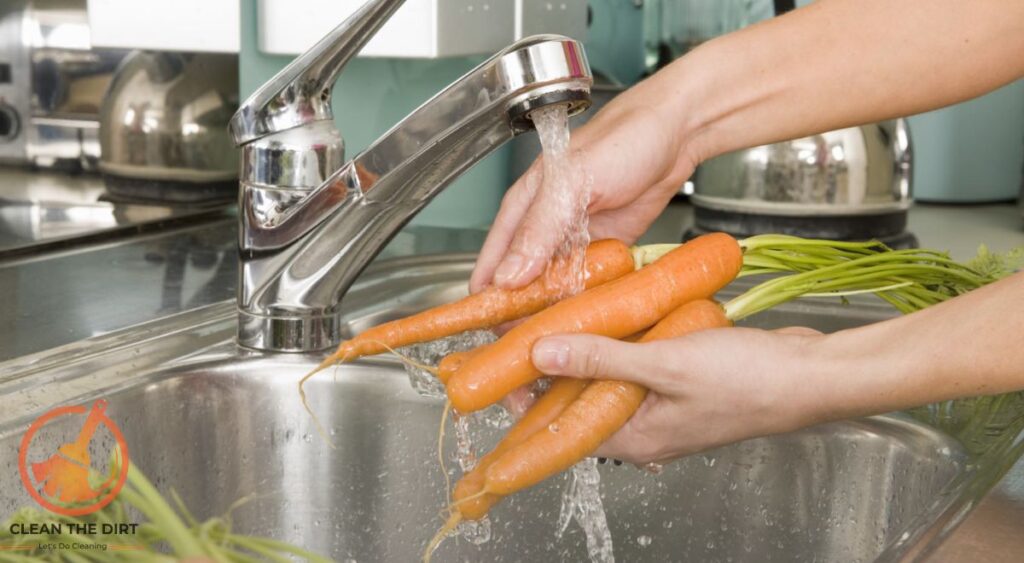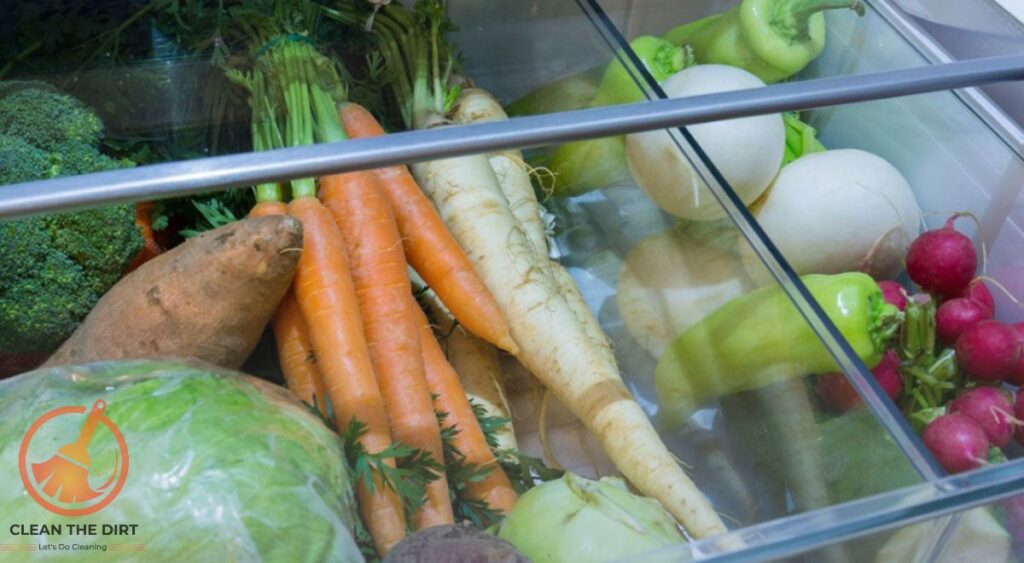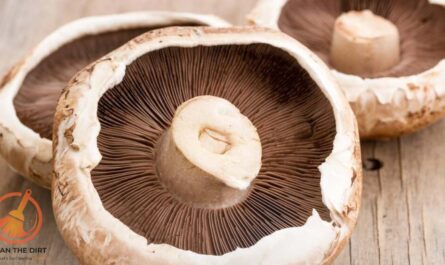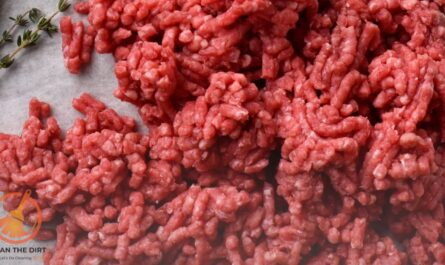Table of Contents
Introduction
Maintaining a healthy diet requires you to keep your veggies clean, but sometimes plain water just isn’t good enough. That’s where baking soda comes in. If you’ve ever wondered how to clean vegetables with baking soda, you’re in the right place. This simple household ingredient is not only effective but also safe and natural.
In this guide, we’ll walk you through how to clean vegetables with baking soda to ensure your produce is free from dirt, pesticides, and bacteria. By the end, you’ll see why so many people trust this method for keeping their veggies fresh and clean. Ready to learn how to clean vegetables with baking soda? Let’s dive in and get started.
Why Clean Vegetables with Baking Soda?
You might be wondering, why bother with cleaning vegetables with baking soda when water seems sufficient? Well, let me tell you, there are several clear reasons.
Firstly, this guide on how to clean vegetables with baking soda is incredibly effective. Baking soda, also known as sodium bicarbonate, has natural cleansing properties that can help remove stubborn residues from your produce. Whether it’s dirt from the farm or pesticides from the market, baking soda works wonders in getting your vegetables squeaky clean.
Secondly, using baking soda is safe and non-toxic. Unlike some commercial cleaners that contain harsh chemicals, baking soda is gentle on both your produce and your health. It’s a natural alternative that won’t leave behind any harmful residues, ensuring that your vegetables are safe to eat.
Furthermore, cleaning vegetables with baking soda is a budget-friendly option. Baking soda is a staple in most households, making it a convenient and inexpensive solution for cleaning your vegetables. No need to spend on fancy cleaners when you can achieve the same results with a humble box of baking soda.
Lastly, let’s not forget about the environmental benefits. By opting for a natural cleaning method like baking soda, you’re reducing your reliance on single-use plastic bottles and chemical-laden products. It’s a small but essential step in the direction of a more sustainable way of life.
In summary, there are plenty of reasons to consider cleaning vegetables with baking soda. It’s effective, safe, affordable, and eco-friendly. So next time you reach for your veggies, remember this guide to learn how to clean vegetables with baking soda.
In addition to using baking soda for cleaning vegetables, consider extending its benefits to other foods. Try cleaning grapes with baking soda to enhance their safety and longevity. Don’t forget to pay attention to cleaning apples with baking soda for complete hygiene assurance.
Supplies Needed
Now that you’re convinced of the benefits of cleaning vegetables with baking soda, let’s gather the supplies you’ll need to get started. Fortunately while acting on this guide on how to clean vegetables with baking soda, you won’t need anything fancy, just a few common items you probably already have in your kitchen.
1. Baking Soda
Of course, the main item of this process. You’ll need a box of baking soda, which you likely already have in your pantry. This versatile ingredient will work its magic in cleaning your vegetables effectively.

2. Water
You’ll also need water to create the cleaning solution. Tap water works just fine, but if you prefer, you can use filtered water for an extra level of purity.
3. A Bowl
Grab a clean bowl large enough to hold your vegetables. This will be used to mix the baking soda solution and soak your produce.
4. Vegetable Brush (Optional)
While not essential, a vegetable brush can be handy for scrubbing tougher-skinned vegetables like potatoes or carrots. If you have one, feel free to include it in your cleaning tools.
With just these simple supplies outlined in this guide on how to clean vegetables with baking soda, you’ll be well-equipped to handle the task of cleaning. So gather your ingredients and let’s get cleaning.
How to Clean Vegetables With Baking Soda? A Step-by-Step Guide
Now that you have all your supplies ready, let’s dive into the step-by-step process of learning how to clean vegetables with baking soda. Be confident that it’s a simple technique that anyone can learn.
1. Preparation
Start by filling your clean bowl with water. You’ll want enough water to fully submerge your vegetables. Then, add baking soda to the water. The recommended ratio is usually about 1 tablespoon of baking soda per gallon of water. Mix the mixture until the baking soda is fully dissolved.
2. Soaking
Once your baking soda solution is ready, it’s time to add your vegetables. Gently place your produce in the bowl, making sure they’re fully submerged in the solution. Give them ten or fifteen minutes to soak. This soaking period allows the baking soda to work its magic, loosening dirt and residues from the surface of the vegetables.
3. Scrubbing
After the soaking period, it’s time to give your vegetables a gentle scrub. Depending on the type of vegetable, you may use your hands or a vegetable brush to gently scrub away any remaining dirt or debris. Be sure to pay extra attention to gaps and folds where dirt may be trapped.
4. Rinsing
Once you’ve scrubbed all your vegetables, it’s time to rinse them thoroughly under running water. This step helps wash away any loosened dirt and residual baking soda. Give each vegetable a good rinse, making sure to remove all traces of baking soda solution.
Your vegetables are now clean and ready to be enjoyed. By following this simple step-by-step guide on how to clean vegetables with baking soda, you can ensure that your produce is fresh, safe, and free from harmful contaminants.
Tips for Different Types of Vegetables
While learning how to clean vegetables with baking soda, different types of produce may require slightly different approaches. Here are some handy tips to ensure that you get the best results for various vegetables.
Leafy Greens (e.g., spinach, kale, lettuce)
- Fill a clean sink or large bowl with cold water and add the appropriate amount of baking soda.
- Submerge the leafy greens in the solution and swish them around gently.
- Let them soak for a few minutes to allow the baking soda to penetrate and loosen any dirt or residues.
- Rinse the greens thoroughly under cold running water, ensuring that all traces of baking soda are removed.
- Spin or pat dry with a clean kitchen towel before storing or using.
Root Vegetables (e.g., potatoes, carrots, radishes)
- Scrub the root vegetables under cold running water to remove any visible dirt.

- Fill a bowl with water and add baking soda to create a cleaning solution.
- Soak the root vegetables in the solution for about 15-20 minutes to loosen any stubborn dirt.
- Use a vegetable brush to scrub away dirt from the surface and gaps.
- Rinse the vegetables thoroughly under running water to remove any remaining baking soda residue.
Delicate Produce (e.g., berries, tomatoes, mushrooms)
- Avoid soaking delicate produce in a baking soda solution, as they may become waterlogged or lose flavor.
- Instead, rinse them under cold running water and gently rub them with your fingers to remove any dirt or residues.
- For berries, you can place them in a colander and gently rinse them under running water, being careful not to crush them.
- Pat them dry with a clean kitchen towel or paper towel before consuming or storing them.
By following the tips mentioned in this guide on how to clean vegetables with baking soda, you can ensure that your produce is thoroughly cleaned and ready to be enjoyed. Experiment with these methods to find the best approach for your favorite fruits and veggies.
Additional Tips and Precautions
While learning about how to clean vegetables with baking soda, there are a few additional tips and precautions to keep in mind to ensure the best results and your safety.
1. Use Fresh Baking Soda
Ensure that the baking soda you use is fresh for optimal cleaning effectiveness. Baking soda that has been sitting in your pantry for a long time may lose some of its potency.
2. Don’t Overdo It
While baking soda is a gentle cleaner, using too much of it can leave a noticeable taste residue on your vegetables. Stick to the recommended ratios and avoid excessive use.
3. Wash Organic Produce Too
Even if you’re buying organic produce, it’s still important to clean it thoroughly. Cleaning vegetables with baking soda helps remove any surface contaminants, including dirt and bacteria.
4. Inspect Your Produce
Before cleaning vegetables with baking soda, take a moment to inspect them for any visible signs of spoilage or damage. Discard any produce that appears moldy, wilted, or otherwise compromised.
5. Store Cleaned Vegetables Properly
After cleaning vegetables with baking soda, ensure that they are properly dried before storing them in the refrigerator. Bacteria and mold may grow in an environment with excessive dampness.

6. Use Cold Water
When rinsing your vegetables after soaking them in a baking soda solution, use cold water. Cold water helps preserve the freshness and crispness of the produce.
7. Avoid Soaking Soft Fruits
Delicate fruits like berries and grapes are best rinsed under running water rather than soaked in a baking soda solution. Soaking them can cause them to become waterlogged and lose flavor.
By following these additional tips given above in this guide on how to clean vegetables with baking soda, you can ensure that your experience of cleaning vegetables with baking soda is both effective and safe. Enjoy your freshly cleaned produce with confidence.
Conclusion
Congratulations, you’ve reached the end of our guide on how to clean vegetables with baking soda. We hope you’ve found this information helpful and informative.
By now, you should have a good understanding of the benefits of cleaning vegetables with baking soda. Not only is it an effective way to remove dirt, pesticides, and bacteria from your produce, but it’s also safe, affordable, and environmentally friendly.
Whether you’re cleaning leafy greens, root vegetables, or delicate fruits, the step-by-step guide on how to clean vegetables with baking soda provided here can be easily adapted to suit your needs. With just a few simple supplies and a little bit of effort, you can ensure that your produce is fresh, clean, and ready to be enjoyed.
So next time you’re in the kitchen preparing a meal, don’t forget to reach for the baking soda along with your vegetables. It’s a small step that can make a big difference in the quality and safety of your food.
In addition to cleaning veggies, try to focus on your other foods as well. To improve the longevity and safety of berries, try cleaning the berries. To ensure total hygiene, don’t forget to clean strawberries.
Consider the various factors in the table below when choosing a vegetable cleaning method. Each offers unique benefits, from effectiveness to environmental impact, helping you make an informed decision.
| Aspect | Baking Soda | Vinegar | Salt Water | Lemon Juice | Commercial Vegetable Wash |
|---|---|---|---|---|---|
| Effectiveness | Removes dirt, pesticides, and bacteria | Effective but strong odor | Removes dirt and some pesticides | Effective, leaves fresh scent | Highly effective, designed for produce |
| Preparation Time | Quick, just mix with water | Quick, mix with water | Quick, dissolve in water | Quick, mix with water | Ready to use, no prep needed |
| Taste Residue | Minimal if rinsed properly | Possible vinegar taste | Can leave salty taste | Mild citrus flavor | No residue, flavor-neutral |
| Residue Removal | Requires thorough rinsing | Requires thorough rinsing | Requires thorough rinsing | Requires thorough rinsing | Minimal rinsing needed |
| Skin Sensitivity | Gentle on hands and produce | Can be harsh on skin | Mildly abrasive | Gentle but acidic | Generally gentle, varies by product |
| Shelf Life | Long, stable | Long, stable | Long, stable | Shorter, depends on lemon freshness | Varies, usually stable |
| Availability | Widely available and inexpensive | Widely available and inexpensive | Widely available and inexpensive | Widely available but cost varies | Widely available but more expensive |
| Usage Frequency | Can be used frequently without issue | Can be used frequently, but odor can be off-putting | Can be used frequently | Can be used frequently but watch for acidity on sensitive produce | Suitable for frequent use |
| Environmental Impact | Eco-friendly, minimal impact | Eco-friendly, minimal impact | Eco-friendly, minimal impact | Eco-friendly, minimal impact | May come in plastic packaging, higher impact |
Thank you for taking the time to learn about how to clean vegetables with baking soda. We hope you enjoy the benefits of this natural cleaning method and share your newfound knowledge with others.
Frequently Asked Questions (FAQs) for How to Clean Vegetables With Baking Soda?
Is it safe to clean vegetables with baking soda?
Yes, it’s generally safe to clean vegetables with baking soda. Baking soda is a natural and non-toxic cleaning agent that can effectively remove dirt, pesticides, and bacteria from produce.
How does baking soda clean vegetables?
Baking soda works as a mild abrasive and helps to loosen dirt and residues from the surface of vegetables. It also has antimicrobial properties that can help kill bacteria.
Can I use baking soda to clean all types of vegetables?
Yes, baking soda can be used to clean most types of vegetables, including leafy greens, root vegetables, and delicate produce like berries. However, some delicate fruits may be better rinsed under running water instead of soaked in a baking soda solution.
Do I need to rinse my vegetables after cleaning them with baking soda?
Yes, it’s important to rinse your vegetables thoroughly after cleaning them with baking soda to remove any residual baking soda and dirt. Rinsing with cold running water is usually sufficient.
Will cleaning vegetables with baking soda affect their taste?
When used in the recommended amounts, baking soda should not significantly affect the taste of your vegetables. However, using too much baking soda may leave a noticeable taste residue, so it’s best to stick to the recommended ratios.
Can I use baking powder instead of baking soda to clean vegetables?
No, baking powder is not recommended for cleaning vegetables. Baking powder contains additional ingredients like cream of tartar and is primarily used as a leavening agent in baking, whereas baking soda is pure sodium bicarbonate and is better suited for cleaning purposes.
Can I use vinegar instead of baking soda to clean vegetables?
While vinegar can also be used to clean vegetables, it has a distinct odor that some people may find off-putting. Baking soda is an odorless alternative that can effectively clean vegetables without leaving behind any lingering smells.
You May Also Like: How to Clean Fruit With Baking Soda and Vinegar?




